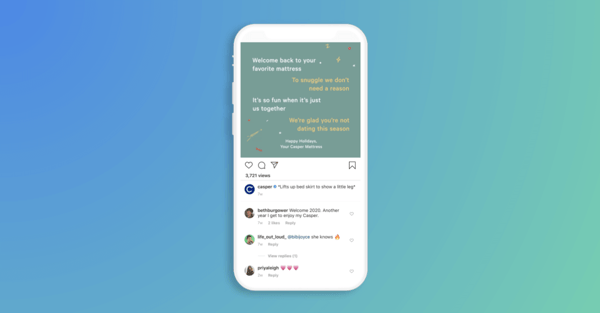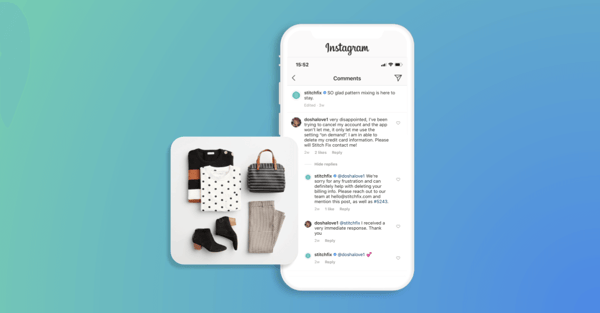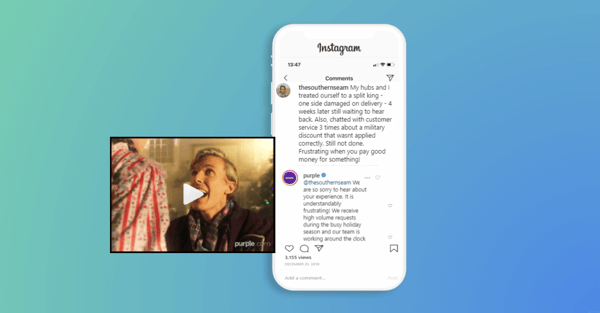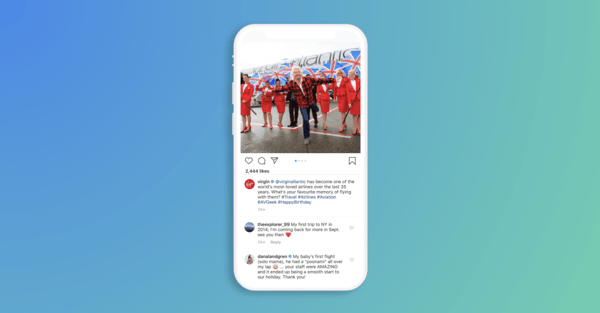
How Top Challenger Brands Are Winning on Social Media
Insights on Challenger Brand Marketing Strategies that Work
In July 2019, the Interactive Advertising Bureau revealed that 48% of all U.S. consumers shop from direct-to-consumer brands. Challenger brands are underdogs in the business arena. Also, they usually enjoy massive public goodwill in their attempts to take on incumbents or monopolies.
Psychologists have conducted many studies trying to understand why people love underdogs. The works of psychologist Nadav Goldschmied suggests that people have a natural tendency to seek out, support, unexpected successes. Also, challenger brands enjoy goodwill because they are often seen to be fighting to protect consumers from greedy brands.
Beyond the goodwill that disruptor brands enjoy as underdogs, their success against bigger brands can also be attributed to ingenious challenger brand marketing strategies coupled with strong tactical execution.
In this blog post, we examine the strategy and behaviors of challenger brands on social media. The goal is to provide valuable insights and learnings for any brand that wants to remain relevant and competitive in the long term.
Here’s what challenger brands do differently
Being a challenger brand is more of an action-driven mindset than mere nomenclature. Below are some things that challenger brands do differently to get an advantage over the established legacy brands. At the very least, changing the status quo gives them a fighting chance to secure a foothold in their industry.
Data-driven actions
Challenger brands have an urgency to show results to maintain investor confidence or secure more funding. Such brands don't invest significant budgets into general awareness campaigns. Rather, they focus on tactical campaigns that bring tangible results, such as sales or new customers. These are campaigns on which they can calculate return on spend within a 12-month period. The marketing decisions are rooted in hypotheses, testing assumptions, and acting on the data.
Challenger brands that succeed understand that data is the lifeblood of their business. The right data will help them define their audience. The data tells them how, where, and when to reach the audience. The data helps them to optimize for the best possible ROAS, conversions, and other metrics.
Brand spotlight: Pura Vida uses data-driven ads to double sales
In 2019, artisanal jewelry company Pura Vida decided to double the number of new customers that it adds between Black Friday and Cyber Monday. To build a data-driven ad campaign, the brand based its hypothesis on the demographics of its current customers to target US females aged 13–54.
The targeting also excluded all its recent online customers and website visitors. It also served the ads to a value-based lookalike audience of male customers. It also served the ads to people who bought stuff during the Black Friday to Cyber Monday of 2018. Last-minute shoppers who bought stuff online in the previous 24 hours also got to see the ads.
At the end of the campaign, Pura Vida recorded a 2.8X lift in ROAS, a 2X increase in sales, and a 28% year-over-year increase in average order value.
.png?width=600&name=Pura%20Vida%20Challenger%20Brand%20Marketing%20(1).png)
Nimble social media engagement
Another challenger brand marketing strategy is that they are intentional about finding witty ways to insert their brands into online conversations. They are fast in engaging with users and jumping on trending topics. 83% of global users expect brands to respond within 24 hours and as much as 46% expect a response within the hour.
For many legacy brands, every piece of communication must be screened across many layers of approval. This vetting includes Instagram posts and tweets. Challenger brands, however, run very lean structures where they make decisions on the go. So, challenger brands are usually nimble and action-driven across their online presence and social media engagement.
Brand spotlight: Casper isn’t afraid to use humor
Casper brands itself as “The Sleep Company”. It optimizes its social media presence across Instagram and Twitter to meet the sleeping and waking needs of its users no matter what time it is. Casper uses self-deprecating humor, risque posts, snarky remarks and lightning-fast responses to provide its audience with an endless supply of entertainment.
Casper’s nimble social media presence made it into Buzzfeed’s 32 Tweets About Sleep that will make you laugh out loud. Its posts also got into the 28 Tweets About Dieting that will make you laugh out loud listicle.

Personalized engagement
Consumers don’t want to be seen and treated as faceless beings that only add to a business’s bottom line. They want to be known, understood, and valued. And no, merely sending them emails on a first-name basis is not enough. 75% of consumers expect brands to understand their individual needs and this is where challenger brands shine.
Challenger brands leverage data from every touchpoint of the customer’s interaction. The data then helps to deliver a personalized engagement that drives increased sales, retention, and loyalty.
Brand Spotlight: Stitch Fix provides a personalized touch across all platforms
Stitch Fix is a challenger brand in the retail fashion industry. Stitch Fix provides a personalized online styling service and shopping experience for its users. It’s users fill out a Style Profile and a Personal Stylist will handpick pieces to fit their tastes, needs, and budget. The end game is to curate a unique styling that is then shipped right to their door.
Stitch Fix also maintains the personalization ideal of its brand in how it relates to users. Its communications, customer service, and social media voice all convey a personal touch. In the Instagram post below, a user posted a review of the personalized service she received from the brand's customer service.

Challenger Brands Marketing Problems and Tips for Success
Challenger brands challenge the status quo through their products/services. They also challenge the status quo in how they engage with customers. Yet, going against the natural order of things also comes with some element of risk. Such risks, when not properly managed, can trigger a PR disaster that could wound a fledgling brand.
Managing negativity in public channels
Many legacy firms provide customer service through private methods such as emails and phone calls. Challenger brands are taking the bold step to provide first-line customer service publicly via social media. However, customers don’t think twice about calling out brands on social media for real or perceived shortcomings. Unfortunately for challenger brands, negative stories are 63% more likely to be clicked on than positive stories. The worst part is that it takes as much as 40 positive customer stories to undo the damage of a negative review.
Purple is an example of a challenger brand that has perfected how to transform negative comments into an overall win. In the screenshot below, a user was frustrated with a damaged delivery, mistakes in discounts, and a delay in getting a response from the customer service team. The user then went ahead to express their dissatisfaction under Purple’s Christmas post. Purple responded with a comment acknowledging the frustration, it explained how the customer care team has a large number of requests during the holiday season and it provided a channel for resolution.

Staying on top of the volumes of engagement with fast responses
Challenger brands use social media to connect and engage with prospects and customers. As a challenger brand continues to grow its social following, it can become hard to manage the high volumes of engagement across social in an efficient, fast and scalable way. Apart from the leading social platforms such as Facebook, Instagram, Twitter, and YouTube. Challenger brands also have to think about engaging in emerging social platforms such as TikTok in response to generational shift changes in the social media landscape.
Away is an example of a challenger brand staying on top of the volumes of engagement across many social platforms. The brand rethinks the standards of modern travel with products that speak to different personal travel styles and needs. Away has built a reputation for responding fast and at scale on Instagram and on Twitter.
.png?width=600&name=Away%20Challenger%20Brand%20Marketing%20(1).png)
Communicating values and mission clearly
Being a challenger brand is not necessarily about challenging legacy companies. At the fundamental level, challenger brands challenge the status quo, ideologies, and cultural norms. The aim is to give consumers the power to choose an alternative. However, the common challenger brand narrative usually positions them as pro-consumer and anti-monopoly. However, such a positioning comes with the inherent risk that the brand will be seen as a “traitor” when its business outgrows its startup phase.
Challenger brands such as Virgin that position themselves to challenge ideas rather than other brands often manage to retain their foundational goodwill even when they’ve grown to become global behemoths. For more than five decades, Virgin has grown into more than 60 businesses serving about 53 million customers globally. Yet, the brand has remained one of the most respected brands in the world.

Summary
Being a challenger brand is not necessarily a function of company size or marketing budget. Challenger brands dare to do the impossible to ultimately make life better for their customers.
However, challenger brands are held to a different standard than legacy brands and have more to prove. They work harder to win the trust of their customers, as the market expects them to be more in touch with their needs and feelings compared to bigger brands. Brands in this space must be intentional about deploying challenger marketing strategies that work and they must be proactive about constantly refining their approach.
Sometimes, challenger brands may need to forego all rules and make their own rules. In fact, breaking the rules set by larger competitors may help you discover the limitations of their strategies so that you can corner significant market share from them without going into a full-blown marketing war with them.
